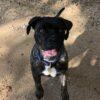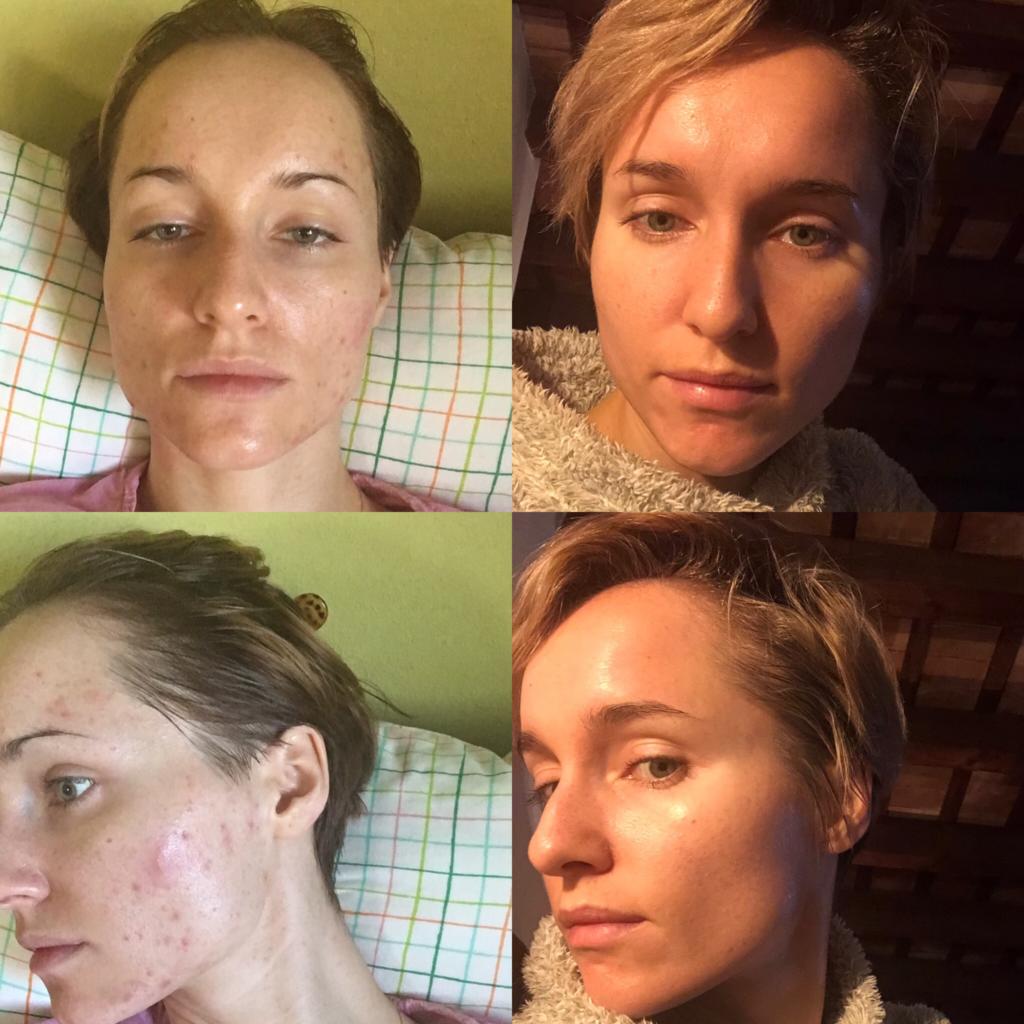“My horse doesn’t want to move forward”
One of the most common signs of that the horse, even a very young horse, is suffering from the Digestive Tract tensions is LACK OF WANT TO MOVE FORWARD. This very first sign of tension of the smooth muscles in the body, can cause a way more serious damage than just the owner’s frustration and conviction that his horse is either lazy, or simply disobedient. If not recognised early enough, and treated with force, pressure or positive reinforcement (clicker training, trying to convince the horse to move by using treats and rewarding steps forward) – the tensions of the smooth muscles can build up and affect with time internal organs causing more severe damage than a “lazy” horse: problems with digestion, colics, problems with keeping up the right weight, over-eating, and food-aggression oriented behaviours towards humans and other horses.
As a horse trainer, I see almost every day horses who suffer in silence because their owners cannot diagnose properly the reason behind the behaviour, or the lack of it. I see people put so much attention to knowing horse’s muscles, anatomy, biomechanics and diet, however I don’t see a single person learning about WHAT’S INSIDE. We treat horses as if they were empty bags, empty cars that when polished and cleaned on the outside should run smoothly without any disturbances.
- We want our horse to have thick and silky hair – we buy coat conditioner and tail detangler,
- We want our horse to have stronger hooves – we change his diet, and trimming,
- We want our horse to move better – we do exercises in the arena, and call body therapist to come and help our horse’s muscles.
- We want our horse to work better through the back – we train his muscles, and maybe we change or refit the horse’s saddle,
- Our horse has bold patches under the girth – we buy a girth with a nice fluffy fur…
We act as if the horse was an empty ball covered with the layer of muscles, skin and fur, and… this is usually how deep we go.
We pay attention to the muscles, and the deepest we reach is up to the diet, but we act as if we have forgotten that the horse’s body is not a computer that will process any numbers we put in, it has organs and it’s them what is responsible for digestion, assimilation and taking advantage of the supplements, electrolytes and food we “put it”.
Tensed internal organs = pain = no willingness to move
When the horse’s internal organs are tensed, and you expect him to digest vitamins and supplements you add so generously to your horse’s diet, it’s like you would have taken a sponge and squeezed it really hard, and then – while still having it squeezed – put it into the water and complain that it doesn’t absorb any of it. When your horse’s organs are squeezed up in his body, pressing upon one another due to inflammation that is the result of prolonged tension in them, they produce pain. This type of pain is called visceral pain. It’s very non-specific pain because it appears only upon the sensation of squeezing, tearing and under-oxygenation. This is why until XXI century medicine was neglecting existence of pain produced by the internal organs – the visceral pain – simply because there was no pain-response in the brain to having them cut. No-one tried pressing or squeezing them up.
Stiffness of your horse’s back can have it’s origin in the tension of his liver
Internal organs don’t have receptors of location , only of pain. That is why the mind cannot locate the source of the pain. In human body, when a person has a visceral pain very often it feels like a migraine or severe headache, non specific pain of the back in the lumbar area. Also very common in people and horses tensions of the jaw very often come from very big tensions of the internal organs. This means that you can “sponge” and “play with the bit” of your horse for hours, and it won’t change a single thing, simply because internal organs of your horse are tensed.
Sounds familiar?
A horse, just like a person, starts to feel his internal organs better when in the movement, this is because while in movement the whole body is rebalancing, also the internal organs in the body are slightly moving, just like oranges in the bag that you cary home from shop. If these oranges are very tightly packed, and the net / bag in which you carry them is pressing onto their skin and each of them presses onto the neighbour, they sensation this creates is very unpleasant, the horse can be simply in discomfort or pain. Therefore the horse decides that it’s better not to move, to stand still, or to move very slowly and “securely”, meaning that it feels as if the movement was stuck and the horse was thinking about taking each and every single step. Interesting fact is, that we, people, respond in the very same way: when our internal organs are tensed and in pain, and especially when our stomach is tensed, we tend to avoid movement.
When it happens to horses they are usually disciplined or forced to move anyway. This of course takes all fun away from the movement, and makes it a very unpleasant experience that makes the horse even more tensed. The horse doesn’t want to move, so he starts to tense his muscles. The tensed muscles twist the horse’s bones and rotate them in the joints, and then then at the age of 6 or 8 the horse already has arthritis, colics and digestive tract organs inflammation signs (skin allergies, laminitis, insulin resistance, etc.), and lamenesses impossible to diagnose. And on top of that, just because o-one likes to move when his insides hurts, the horse starts to move in a crooked or improper way, and furthers his own problems. The way to undo this “knot” and release tension from the inside of our ball, would be to look at it in the same way as we look at the apple. It’s very obvious that if the apple’s skin is not good and has black spots on it, it means that the inside is probably already rotten.
The way to deal with all the signs of problems with digestive tract tensions in horses is to take care of the car’s engine, and look into your horse’s smooth muscles tensions and internal organs tensions and simply release them. The best way to do it is through the techniques of conscious muscle relaxation. A horse with healthy internal organs, will want to move, simply because when he will nothing will be causing an unpleasant feeling inside of him, that he would not understand and will want to avoid.
Please read this brilliant testimony sent to me by an Optimal Performance Program Student, and discover how her young dressage prospect LET GO of his inner “knot” in just 2 weeks thanks to OPP:
Iga Mackiewicz, Poland: “Boogie Blues is my 3,5 year old Oldenburger, recently gelded. I’ve owned him since his birth but has only just started regular “work” with him. He had a lot of unfortunate accidents in the past and he is a pretty big fellow maturing slowly, so I am really focused on giving him as much childhood and freedom as possible. I did the OneHorseLife’s Foal Class with him – but because he was in a stable 100km away from where I live it was only once a week, and most of the time he was just enjoying his herd of young stallions. Now, I moved him to the stable where I see him every day.
My first observation after bringing him here was that whenever in the round pen – he seemed pretty closed, and acted as if there was a little “knot” inside of him, making him stiff and unwilling to move. It was virtually impossible to make him trot, without using force. I was pretty devastated and didn’t know what to do – cause he was clearly healthy and quite expressive when in the field. I was thinking about buying the Energy Course from Anna, but ended up contacting her and upon consulting the idea with her I decided to go with the OPP course.
We have just started really, focusing on developing Relaxation Technique of course. Making kilometres walking and enjoying our relaxation moments. What I wanted to share is that all of a sudden, Boogie started offering pretty relaxed trots completely by himself! No chasing, no sticks, no force whatsoever. He is far away form relax in the elevated heart rate, but still the change is so significant and coming really from HIM – that I decided to share it. He is also really at ease with treats and much easier to manage when around mares (he still thinks he’s a stallion). This was a big and fast change, that I didn’t really expect. What’s more I observe time and time again quite vigorous peristalsis in both him and me – while training! I think I need to relax, also in everyday life, about as much as he does, cause we are both pretty sensitive and worrying-about-everything type. I’m really looking forward to where the OPP takes us.”
RELAX THAT STOMACH with my help:
When the horse is relaxed he simply wants to move. In my most recent SpotLight Clinic RELAX THAT STOMACH I am sharing with my students 3 TECHNIQUES to support relaxation of the digestive tract for Horses, Dogs and Humans you can join me and learn them here: https://gumroad.com/l/SpotLightStomachRelease
Read what others have experienced thanks to the SpotLight Clinic RELAX THAT STOMACH:
“Perfect, thank you! I work with wild mustangs and a lot of horses with past trauma so your work on relaxation is a great help with that. Natural horsemanship, which is common here, has great elements. However, horses who are habitually tense are hard to deal with and help just with that, so I’m always looking outside the box.”
“Anna Marciniak, today I did OPP Relaxation on Food Technique for Humans before breakfast, and ended up barely eating much all day. This is very deep work! Thank you.”
“Thank you Anna!!! I’m on the right path for myself and my horses. The next 2 weeks [spent on practicing the techniques shown in the SpotLight Clinic] will be interesting!”
“This is very interesting and I HAVE NEVER SEEN ANYTHING LIKE IT! I have only seen dogs trained with hand signals, verbal cues, and rewards, as well as a yank on a leash. BRAVO!”
“Anna, today I took breaths before breakfast and ended up barely eating much all day. This is very deep work! Thank you!”
“Thank you so much Anna!! This is so interesting and so important to know. I am so happy that I could follow this clinic! It makes so much more sense now why our older mare has many health issues and why she is not gaining more weight altough we tried many different things. Thank you for explaining it so clear with all the drawings and examples it really helps!”
It took me literally years to develop what I am going to share with you…
Since the last THREE YEARS I have been discovering, developing, and practicing Optimal Performance Program Stomach Release and Digestive Tract Relaxation Techniques on myself, with very powerful results, and since 2018 year I am transferring them with great success onto horses.
Apparently, we all say that a horse is not a car, but when something doesn’t go quite right we look so much more frequently into the car than into the horse’s insides. I believe it’s high time to move beyond layers of muscles, and look deeper into our horses, to discover that THE “BALL” IS NOT EMPTY!…
…And that there are no limits to the power of conscious relaxation of internal organs, they simply AFFECT EVERYTHING: Michelle, OPP Student from the Netherlands sent me this message yesterday: “I forgot to tell that the farrier said the hooves improved a lot. He almost didn’t recognise the horse…!“)
Read my journey with relaxation on internal organs and lean what I have discovered over the last three years: https://onehorselife.com/how-not-what/



